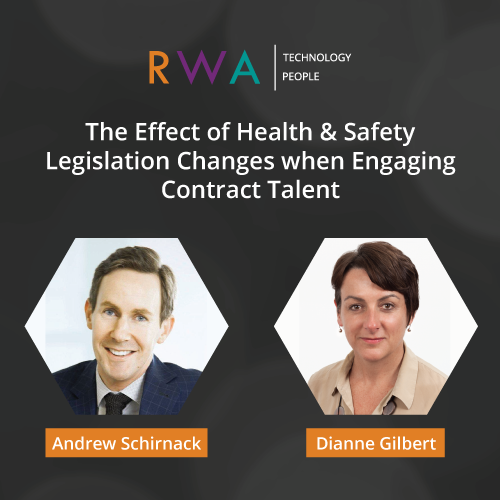 Two weeks ago we hosted our Health & Safety Symposium. The Symposium examined the recent changes to Health & Safety legislation, featuring the insights of legal specialist Andrew Schirnack and Australian Health & Safety expert Dianne Gibert. If you’d like to see their presentations in full, please watch the video at the end of this overview.
Two weeks ago we hosted our Health & Safety Symposium. The Symposium examined the recent changes to Health & Safety legislation, featuring the insights of legal specialist Andrew Schirnack and Australian Health & Safety expert Dianne Gibert. If you’d like to see their presentations in full, please watch the video at the end of this overview.
New Rules for Health & Safety
The new legislation came into force on the 4th of April, after the inquiries and reports following the Pike River Mine Disaster forced legislative change. With a new regulator in WorkSafe New Zealand being appointed, a proactive and positive “top down” approach has been put in place.
This has increased the duty of due diligence for those who can influence Health & Safety. Now, each person within the business who has the significant influence over the management of a business (from Managers to Directors and more) is obligated to do their due diligence and address any Health & Safety issues proactively. The new approach also focuses on allowing and encouraging workers to have a more active role in shaping Health & Safety systems from the bottom up. All of these measures have been taken to ensure that New Zealand’s workplaces are the safest they can possibly be.
With these changes, a significant impact has been made on the legalities and obligations surrounding on-hire and contract workers in the workplace.
Key Definitions
Three key definitions have been outlined to describe each person involved with the business; PCBU, Officer, and Worker. PCBU stands for “person conducting a business or undertaking” and includes employers, principals, contractors, and persons controlling a place of work. Under the previous legislation, each of these were dealt with separately. Workplaces can contain more than one PCBU, and their duties overlap. This means that responsibility for safety cannot be delegated.
The Officer is any person occupying a position in relation to the business or undertaking that allows for significant influence over the management of the business. This can stretch from CEOs and Directors through to General Managers and Health & Safety Directors.
The term ‘Worker’ includes employees, contractors, subcontractors, volunteers or employees of a labour hire company assigned to work in the business. With multiple PCBUs being able to exist within a business, and contractors being a type of PCBU, there may be occasions on which some workers are also the PCBU. This can lead to some complex consequences, as Andrew Schirnack explains in his presentation.
These changes mean that the businesses engaging on-hire and contract talent now have overlapping PCBU duties with as the recruitment agency that supplies this talent.
Responsibilities and Obligations
In relation to on-hire workers, organisations should specify the activities and responsibilities the worker will undertake before engaging them. Once set, these responsibilities should not be changed without the worker’s approval. This information includes the duties and responsibilities of the role, as well as any required competencies, licenses or certifications. The agency will then confirm that the host site is safe, select the worker and provide them with general Health & Safety training on the host site. The organisation must also provide site-specific training to the worker. The organisation and agency will then maintain communication throughout the assignment, and the organisation must inform the agency of any risks, hazards and/or incidents.
Identifying risks and addressing them is key to best practice when it comes to Health & Safety. In industries such as IT, some of these risks might not be as obvious as they would be in industries like manufacturing or construction. Though it is important to understand your workers’ individual health issues, risks like ergonomics and the consequences of sedentary work often go under the radar. However, these issues can have serious health consequences if left unattended.
Accounting for the behaviour of other individuals is also an important part of ensuring Health & Safety. Bullying, harassment and threats of violence must be dealt with accordingly if a safe work environment is to be created. Though it is expected that organisations must ensure the health and safety of all of their workers so far as is reasonably practicable, this now includes their mental wellbeing too. Under the new legislation, meeting this obligation adequately requires the identification and assessment of risks so that they can be eliminated or minimised, and a review of the measures taken to control those risks, to ensure they are working as planned. All workers must be aware of safety requirements, and must be competent to undertake their roles and respond appropriately if an incident does occur. This means that contractors must be included in Health & Safety briefings, so that they are aware of their safety responsibilities.
Summary
We’d like to thank Andrew and Dianne once again for their take on the recent Health & Safety legislation changes, and for providing us with such a deep insight into their impact. The responsibilities that employers, employees and employment agencies now have to each other is quite different, and it is important for everyone to be familiar with these. If you’d like to see Andrew and Dianne’s presentation in full, please watch the video below. Alternatively, if you’d like more information on the recent changes to Health & Safety legislation and how they might impact you, please get in touch and we’ll see how we can help.

